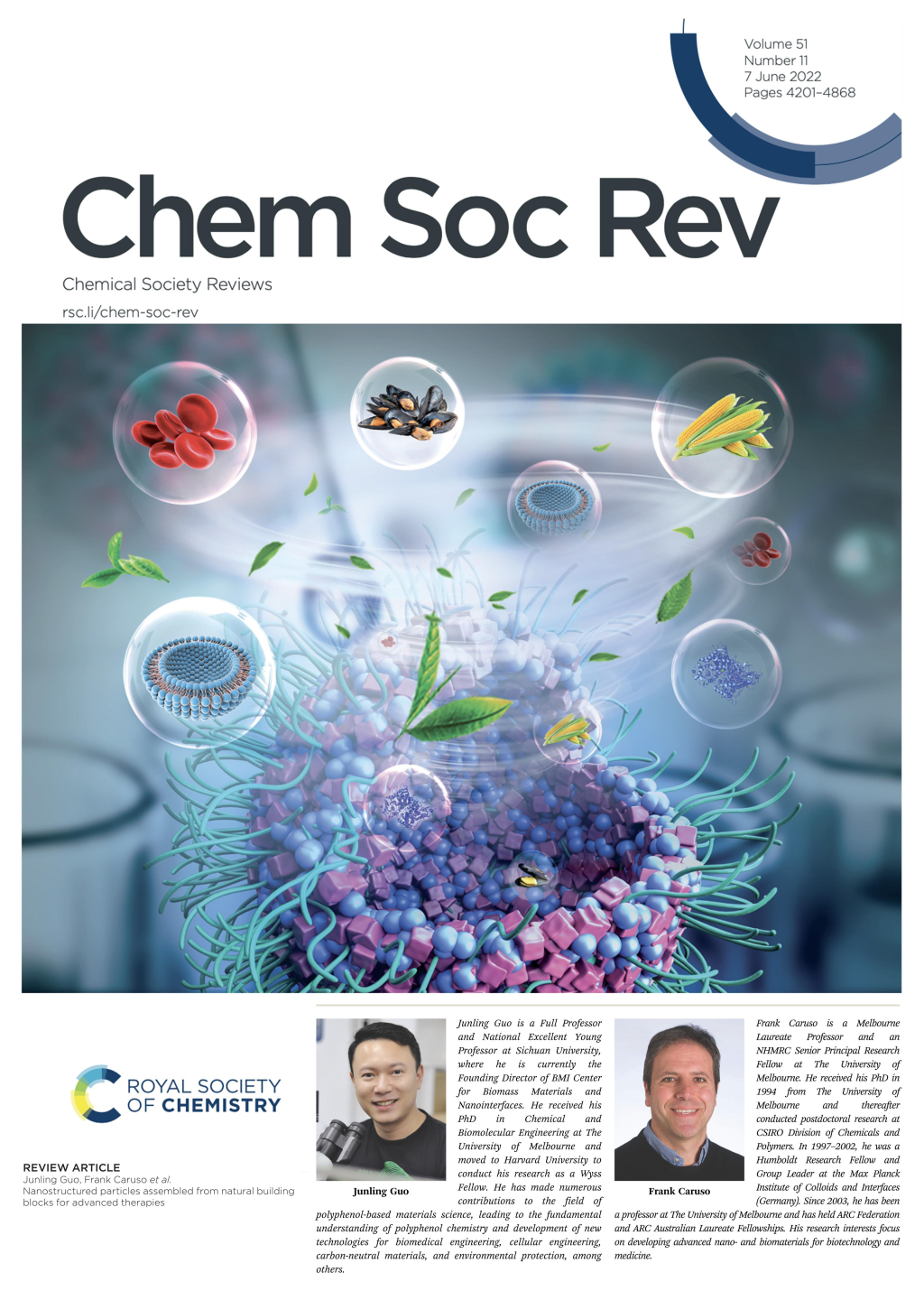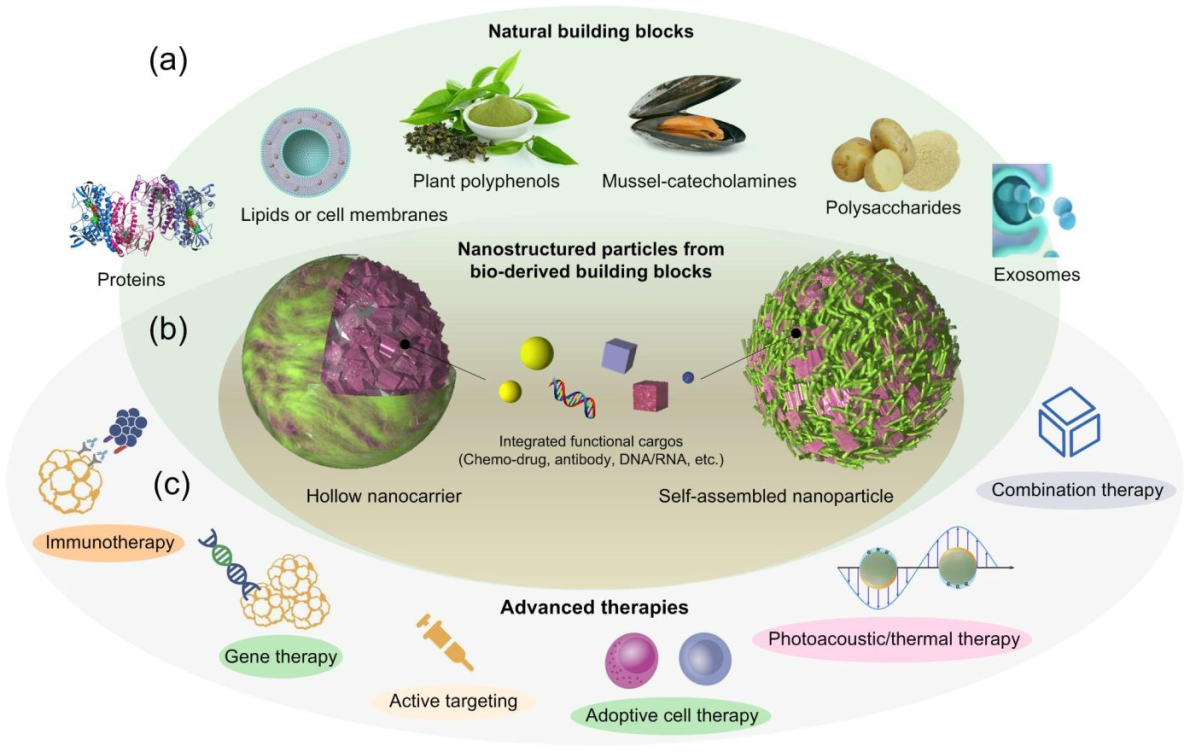
Professor Junling Guo of our university was recently invited to publish in Chemical Society Reviews an important review entitled "Nanostructured Particles Assembled from Natural Building Blocks for Advanced Therapies", summarizing the research progress of biomass materials, and the review was selected as the cover story (Figure 1). This review details a variety of biomass materials currently used to construct nanoparticles, including proteins, lipids, polysaccharides, small molecule catecholamines, natural polyphenols, cell membranes and exosomes (Fig. 2), introduces and discusses their natural characteristics and comparable performance, and emphasizes the importance of biomass based nanoparticles in overcoming the key challenges related to a variety of advanced therapies. (Fig. 3).


The co first authors are Haotian Liao, an assistant researcher of the Department of Liver Surgery and Liver Transplantation of West China Hospital, and Yi Ju, a research fellow of the University of Melbourne, Australia. Junling Guo andFrank Caruso FRS, an internationally renowned materials scientist and professor of the University of Melbourne, are the co corresponding authors of this paper.
“Advanced treatments based on immune system manipulation, gene transcription and regulation, specific organ and cell targeting, and/or photon energy conversion have emerged as promising therapeutic strategies against a range of challenging diseases. Naturally derived macromolecules (e.g., proteins, lipids, polysaccharides, and polyphenols) have increasingly found use as fundamental building blocks for nanostructured particles as their advantageous properties, including biocompatibility, biodegradability, inherent bioactivity, and diverse chemical properties make them suitable for advanced therapeutic applications. This review provides a timely and comprehensive summary of the use of a broad range of natural building blocks in the rapidly developing field of advanced therapeutics with insights specific to nanostructured particles. We focus on an up-to-date overview of the assembly of nanostructured particles using natural building blocks and summarize their key scientific and preclinical milestones for advanced therapies, including adoptive cell therapy, immunotherapy, gene therapy, active targeted drug delivery, photoacoustic therapy and imaging, photothermal therapy, and combinational therapy. A cross-comparison of the advantages and disadvantages of different natural building blocks are highlighted to elucidate the key design principles for such bio-derived nanoparticles toward improving their performance and adoption. Current challenges and future research directions are also discussed, which will accelerate our understanding of designing, engineering, and applying nanostructured particles for advanced therapies.” (Abstarct)
The research was funded by the "National Overseas High-Level Talent Program", "National Natural Science Foundation of China (22178233)", "Talent fund of National Engineering Research Center of Clean Technology in Leather Industry", "Talent Fund for State Key Laboratory of Polymer Materials Engineering (sklpme 2020-3-01)", and so on.
https://pubs.rsc.org/en/content/articlelanding/2022/cs/d1cs00343g#!
